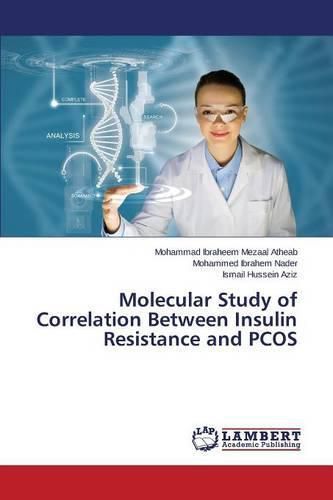Readings Newsletter
Become a Readings Member to make your shopping experience even easier.
Sign in or sign up for free!
You’re not far away from qualifying for FREE standard shipping within Australia
You’ve qualified for FREE standard shipping within Australia
The cart is loading…






This title is printed to order. This book may have been self-published. If so, we cannot guarantee the quality of the content. In the main most books will have gone through the editing process however some may not. We therefore suggest that you be aware of this before ordering this book. If in doubt check either the author or publisher’s details as we are unable to accept any returns unless they are faulty. Please contact us if you have any questions.
Polycystic ovary syndrome (PCOS) is one of the most common female endocrine disorders, but there is strong evidence that it can to a large degree be classified as a genetic disease.It is thought to be one of the leading causes of female subfertility and the most frequent endocrine problem in women of reproductive age.Women with PCOS are more insulin resistant, and up to 40% of these patients have impaired glucose tolerance. They are at an increased (3-7 times) risk of developing early-onset type 2 diabetes, the risk being greater in obese PCOS patients and those with a family history of type 2 diabetes.Insulin plays both direct and indirect roles in the pathogenesis of androgen excess in PCOS.A highly polymorphic stretch of DNA lying 360 bp upstream of the initiation of transcription of the INS gene called Variable Number of Tandem Repeats (VNTR). There are three classes of (VNTR) in the insulin gene (class I, class II and class III) .Any mutations in this region may be effect on insulin gene (INS) expressions .
$9.00 standard shipping within Australia
FREE standard shipping within Australia for orders over $100.00
Express & International shipping calculated at checkout
This title is printed to order. This book may have been self-published. If so, we cannot guarantee the quality of the content. In the main most books will have gone through the editing process however some may not. We therefore suggest that you be aware of this before ordering this book. If in doubt check either the author or publisher’s details as we are unable to accept any returns unless they are faulty. Please contact us if you have any questions.
Polycystic ovary syndrome (PCOS) is one of the most common female endocrine disorders, but there is strong evidence that it can to a large degree be classified as a genetic disease.It is thought to be one of the leading causes of female subfertility and the most frequent endocrine problem in women of reproductive age.Women with PCOS are more insulin resistant, and up to 40% of these patients have impaired glucose tolerance. They are at an increased (3-7 times) risk of developing early-onset type 2 diabetes, the risk being greater in obese PCOS patients and those with a family history of type 2 diabetes.Insulin plays both direct and indirect roles in the pathogenesis of androgen excess in PCOS.A highly polymorphic stretch of DNA lying 360 bp upstream of the initiation of transcription of the INS gene called Variable Number of Tandem Repeats (VNTR). There are three classes of (VNTR) in the insulin gene (class I, class II and class III) .Any mutations in this region may be effect on insulin gene (INS) expressions .